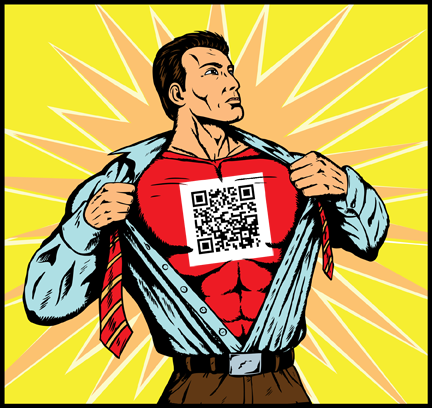Uncategorized
Are QR Codes Here to Save Print?
It seems many pundits are ready to write print media off as a dying industry. Newspaper and magazine subscriptions are dwindling. The post office is having financial problems. eReaders are cutting into traditional book sales. Marketing dollars are being spent in a wider variety of ways as the Internet and electronic devices continue to offer up new ways to reach consumers.
Yes, it is an undeniable fact that new technologies are changing the way marketing is done. But that isn’t all bad news for print. Take for instance the emergence of QR (Quick Read) Codes. QR Codes were created in 1994 for use in automotive industry inventory control. Now, it seems, those crazy quilt configurations of black and white squares just might be print’s new best friend, if not actual savior. It is a safe bet to say everyone has seen one. The number of people using them grows daily. A study released in June 2011 by comScore found that the users were more likely to be men (60.5% of scanners) and aged 18 to 34 (53.4%) and have a household income of $100,000 or above (36.1%).
The premise seems simple enough in a magical teleporter kind of way. Use a (usually) free app on your smart phone to scan the QR Code with a quick point and click. A new window opens on your screen with information. The most common landing site is a web page. But they can also be used to download contact information to vCards, provide coupons, airline boarding passes, event tickets, and audio downloads.
Sounds cool, but what does it have to do with print? Well, the QR Codes have to be put in front of the desired audience somehow. It isn’t a competition between marketing vehicles, but collaboration.
By including a QR Code on a business card the contact info can be entered into the phone’s contact list without having to type it in. When used on a postcard, brochure or sales sheet it is possible to link to a website providing even more in-depth information. A magazine ad can promote a coupon through QR Code usage. In store signage can link to product specs. Real estate leasing posters and signage can pull up site-specific leasing materials and contacts. QR Codes can be used on packaging for recipes, contests, or product information. The uses for the codes are constantly growing and so is the use of printed materials to distribute them.
Ultimately it comes down to not just adapting to change, but also embracing it and seeing the possibilities. It has never been about the printed piece itself, but the distribution of information and the call to action. The one thing that never changes is print’s role in driving consumers to act.

